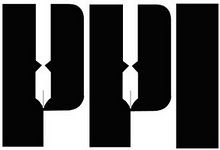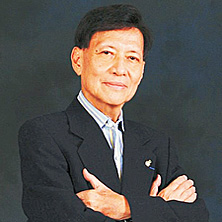PHILIPPINE JOURNALISM
The Philippine press began to be known as “the freest in Asia.” The press functioned as a real watchdog of the government. It was sensitive to national issues and critical of government mistakes and abuses.
I. Increasing Professionalism

A. Philippine Press Institute
Founded in 1964, the Philippine Press Institute (PPI) was organized “to foster the development and improvement of journalism in the country.” However, it would later become inactive during the Martial Law regime. In its heyday, it was known as the national association of newspapers and represented the interests and concerns of the print media. The institute conducts training programs and organizes educational activities for Filipino journalists, seeks to protect their rights and freedoms in the pursuit of their practice, creates and introduces opportunities for the development of the journalist as a practitioner.
Among its contributions to the traditions of Philippine Journalism include the publication of the Law of the Press: A PPI Manual in 1965, Clear Effective Writing: A PPI Manual in 1967 and with the National Press Club, the later formulation of the Journalist’s Code of Ethics.
B. Establishment of formal training and degree programs
In 1960, the Philippine Women’s University established a school in journalism.
1966 saw the re-establishment of the BS Journalism degree under the Institute of Mass Communication in the University of the Philippines.
In 1971, the University of Santo Tomas begins offering its BA Journalism degree under its Faculty of Arts and Letters
II. Prominent Print Media and Journalists of the Era

A. Manila Times; Chino Roces
Possibly the most famous figure associated with The Manila Times was Joaquin “Chino” Roces, ‘Grand Old Man’ of Philippine journalism and long-time editor of The Manila Times. He was one of the founders of the Philippine Press Institute and was responsible for the Manila Times Style Book (1960) and the Manila Times Journalism Manual (1963).
B. The Evening News; Maximo Soliven

Maximo Soliven became the editor and publisher of The Evening News at the tender age of 27. Under his tenure, The Evening News jumped from 6th in circulation to the second largest newspaper in the country. He, like the other journalists mentioned in this paper, would be detained during Martial Law. He would later co-found The Philippine Daily Inquirer (1985) and The Philippine Star (1986).
 C. Philippine Free Press; Teddy Locsin Sr.
C. Philippine Free Press; Teddy Locsin Sr.
Teddy Locsin Sr. was another prominent journalist detained during Martial Law. Before this, he was the editor of the Philippine Free Press, one of the oldest and most respected weekly magazines in the country. It was due to the magazine’s stance of repeatedly warning against a plan by then-President Marcos to implement military rule to stay in power that Locsin was detained.
Napoleon Rama was the editor of the El Observatorio, the only Spanish language newspaper in Cebu, which regularly published news stories about Spain and South-America. Aside from these, he was known for an article published in the Philippine Free Press entitled “North Borneo Belongs To US”. This would later become the basis of the government’s negotiations in reclaiming Sabah. Eventually he would become the floor leader of the 1987 Constitutional Convention.

